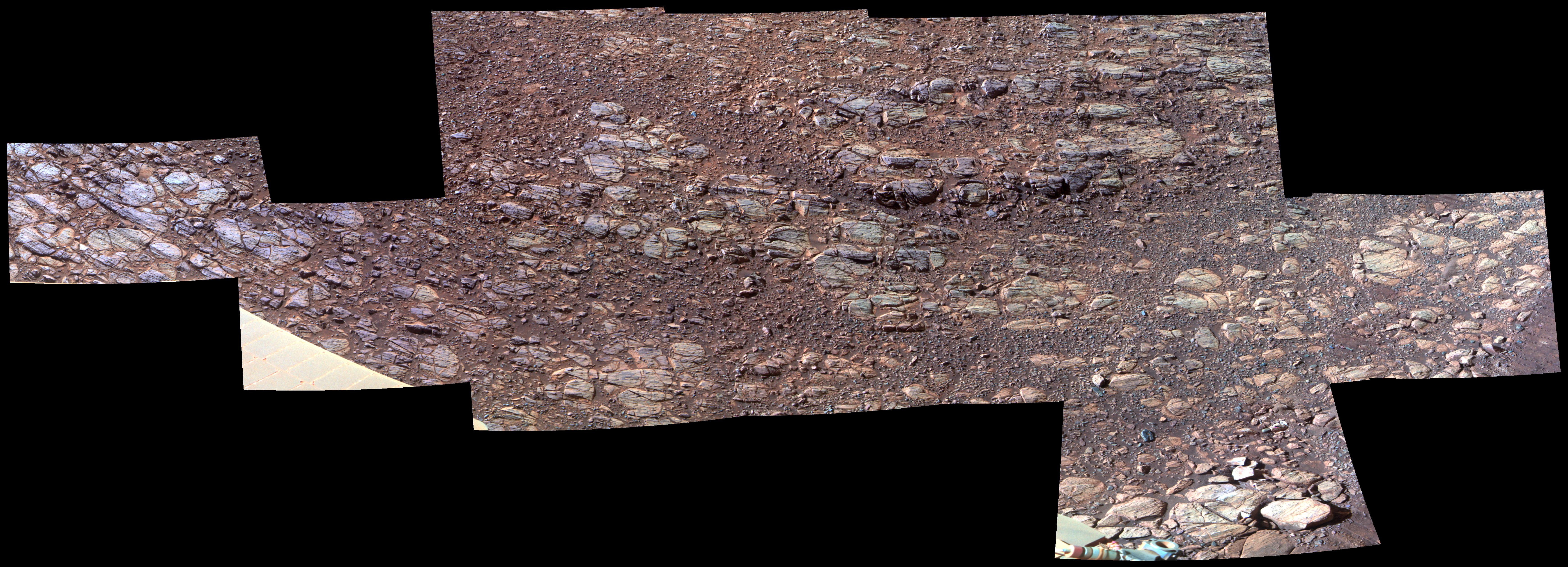Opportunity Rover Makes It Through Depths of 8th Martian Winter

The harsh Martian elements still haven't broken NASA's long-lived Opportunity rover.
The solar-powered Opportunity has rolled through the coldest and darkest parts of the Martian winter in good nick, NASA officials said. The lowest-light period of the current Red Planet year, which lasts 687 Earth days, came in October and November, they added.
The rover is therefore well on its way to surviving this winter, the eighth the craft has endured since touching down in January 2004, a few weeks after its twin, Spirit, landed. Both six-wheeled robots were tasked with searching for signs of past water activity on Mars, in missions designed to last just three months. [Latest Mars Rover Photos from Opportunity & Spirit]
"I didn't start working on this project until about Sol 300," Jennifer Herman, power subsystem operations team lead for Opportunity at NASA's Jet Propulsion Laboratory (JPL) in Pasadena, California, said in a statement. (A sol is a Martian day, which lasts about 24 hours and 40 minutes.) "I was told not to get too settled in, because Spirit and Opportunity probably wouldn't make it through that first Martian winter. Now, Opportunity has made it through the worst part of its eighth Martian winter."
The rover's solar panels are quite free of dust at the moment, she added.
"If Opportunity's solar arrays keep getting cleaned [by wind] as they have recently, she'll be in a good position to survive a major dust storm," Herman said. "It's been more than 10 Earth years since the last one, and we need to be vigilant."
Spirit also far outlasted its warranty, but that rover is no longer with us. After losing the use of two wheels, Spirit got bogged down in soft Martian dirt in 2009. The rover's handlers couldn't reorient it to catch enough sun during the ensuing winter, and the rover essentially froze to death in 2010.
Breaking space news, the latest updates on rocket launches, skywatching events and more!
The crucial winter orientation, which Spirit's handlers were striving for, is to face the rover northward. Both Spirit and Opportunity landed (at separate sites) in Mars' southern hemisphere, so they've needed to find north-facing slopes to stay warm and powered up during the coldest months.
The impact of the season on the rovers' science work has varied widely, depending on the nature of the terrain they were exploring when winter hit. For example, Opportunity spent its first winter on the north-facing slopes of a crater, so it was able to stay quite active. But the rover had to camp out for 19 weeks in a single spot during its fourth winter, in 2009 and 2010, NASA officials said.
Opportunity has managed to work through much of this year's late fall and early winter. It's been exploring the water-carved Perseverance Valley, which runs down the inner slope of the western rim of the 14-mile-wide (22 kilometers) Endeavour Crater.
As Opportunity drives through the valley, the rover has been stopping at north-facing sites to catch some rays, a strategy the team likens to a frog hopping from lily pad to lily pad. The team plans to continue its exploration of Perseverance over the next few months, searching for clues about how the valley was carved into the crater rim.
"We have not been seeing anything screamingly diagnostic in the valley itself about how much water was involved in the flow," Opportunity project scientist Matt Golombek, also of JPL, said in the same statement. "We may get good diagnostic clues from the deposits at the bottom of the valley, but we don't want to be there yet, because that's level ground with no more lily pads."
The other active rover on the Martian surface, NASA's car-size Curiosity, doesn't have to worry about angling itself toward the sun to make it through the winter. That rover is powered by a radioisotope thermoelectric generator, which converts the heat generated by the radioactive decay of plutonium-238 into electricity.
Follow Mike Wall on Twitter @michaeldwall and Google+. Follow us @Spacedotcom, Facebook or Google+. Originally published on Space.com.

Michael Wall is a Senior Space Writer with Space.com and joined the team in 2010. He primarily covers exoplanets, spaceflight and military space, but has been known to dabble in the space art beat. His book about the search for alien life, "Out There," was published on Nov. 13, 2018. Before becoming a science writer, Michael worked as a herpetologist and wildlife biologist. He has a Ph.D. in evolutionary biology from the University of Sydney, Australia, a bachelor's degree from the University of Arizona, and a graduate certificate in science writing from the University of California, Santa Cruz. To find out what his latest project is, you can follow Michael on Twitter.


